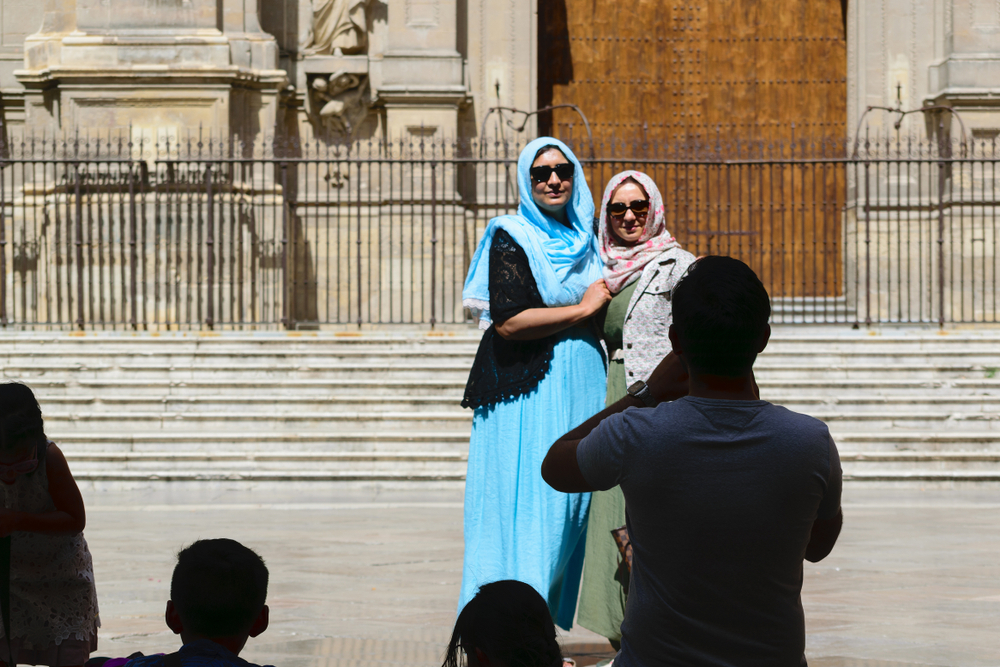Commentary: Destinations should turn to Muslim tourists to plug the gap in Chinese arrivals
This commentary is written by Hannah Pearson, Director of Pear Anderson, a boutique tourism consultancy specialising in Muslim tourism, based in Kuala Lumpur, Malaysia.
As I write this on Monday morning, it seems that en-masse COVID-19 infections outside of China are coming thick and fast - 602 cases in South Korea, 76 in Italy, and 28 in Iran, according to the WHO Feb 23 situation report. China is still suffering with 77,042 cases. In short, it’s a gloomy picture to start the week.
The doom continues into even gloomier territories once we start looking at the tourism statistics that have been put out there over the past few weeks: the International Air Transport Association (IATA) has warned airlines may lose $29.3 billion in 2020 (with $27.8 billion of that in APAC alone), Oxford Economics put out an analysis that there will be a $22 billion loss in Chinese outbound tourism spending in best case scenarios, a $73 billion loss in their downside scenarios.
To put it simply, the world has come to rely on Chinese tourism. In 2018, approximately 150 million Chinese travelled abroad according to the UNWTO, and this number would only have increased in 2019. It is the main source market for countries like Japan - last year, Chinese outbound tourism spend in the country accounted for 36.8% of all foreign tourist spending. In Thailand, Chinese travellers accounted for around 30% of arrivals in 2019. Even the U.S. could be hit by $10 billion losses due to COVID-19.
Putting all your eggs in one basket is dangerous. It seems that 2020 will be the year in which many tourism organisations will realise this by witnessing first-hand the impact of over-reliance on one source market. And, I hope, they will realise that COVID-19 is an opportunity - an opportunity to re-invent their tourism strategies, to re-look at priority source markets and re-invigorate their tourism offerings.
New Zealand PM Jacinda Ardern has already announced a $6 million fund to diversify Tourism New Zealand’s marketing portfolio in other countries as a response to support the tourism industry.
A major way in which tourism boards can diversify their source market is by targeting Muslim travellers. By 2020, Mastercard-CrescentRating forecasts that the number of Muslim travellers will hit 156 million - pretty close to China’s 134 million travellers last year.
An advantage of targeting Muslim travellers? In cases like COVID-19, where certain countries are disrupted, there will always be other geographies to look at. APAC Muslim travellers affected by a travel ban? Look at North American Muslims. Middle Eastern Muslim travellers reluctant to travel? Turn to European Muslims.
Even before COVID-19 started to decimate travel arrivals, tourism boards, predominantly in APAC, started to develop resources and infrastructure specifically to welcome Muslim tourists.
Japan National Tourism Organisation (JNTO) started campaigning fiercely a few years ago to attract Muslim travellers from Southeast Asian countries such as Malaysia and Indonesia. They created guidebooks, online resources and built up Muslim-friendly infrastructure such as prayer rooms throughout the country. Their campaign has been successful: close to 500,000 Malaysian and 400,000 Indonesian travellers visited Japan in 2019, an increase of 101% and 160% respectively vs. 2014. This was also boosted by easing visa restrictions, but has only been achieved because JNTO has pursued a policy of making the country more Muslim-friendly. Whilst Japan’s Muslim tourism industry starts to flourish, this increase in visitors will go some way towards offsetting the loss of Chinese tourists in 2020.
The Singapore Tourism Board announced in early January 2020 that it would launch a “mega campaign” to target Muslim travellers. This campaign is expected to highlight the country’s halal dining scene as well as cultural opportunities, presenting a multicultural side to the city-state which they hope will resonate with Muslims. Muslim travellers are estimated to make up 18 - 20% of overall arrivals, whilst Chinese travellers made up 24% in 2019.
Whilst APAC tourism boards are blazing the way, their European and North American counterparts are lagging behind when it comes to campaigns specifically targeting Muslim travellers - yet the irony is that these countries and cities often benefit from a superior Muslim-friendly infrastructure that already exists. New York, London, Paris, Barcelona - these are all cities which have sizeable Muslim populations, therefore already have plenty of prayer spaces and halal eateries dotted throughout the city.
However, there is a lack of comprehensive advertising campaigns by national tourism boards in these countries to highlight how easy it is to experience the city as a Muslim traveller.
Instead, effort has been poured into attracting Chinese tourists, developing infrastructure, training local guides to speak Mandarin, developing city guides, launching national tourism websites in Mandarin, and so on.
When it comes to the Muslim travel segment, many national or city tourism boards can simply collate information on existing infrastructure, and then focus on making this information readily-available to Muslim consumers. By putting this information online in a cohesive campaign, it guarantees an almost immediate reach.
By all means, I am not suggesting that attracting Muslim travellers is going to be a magic elixir, one that will fix the impact that COVID-19 is going to have, both on the impact from the lack of Chinese travellers visiting in the first-quarter and the second-quarter, and the lack of appetite for travel from non-Chinese markets.
Nor will it necessarily be a quick-fix. Like any market, it needs cultivation. Rather, attracting Muslim tourists will help to future-proof a country’s source market destination strategy and will make their tourism marketing plan more agile.
Now is the time, when markets are quiet, to dig deep and challenge the status quo. Now is the time to innovate - and personally, I cannot wait to see what innovations this COVID-19 curveball is going to drive.
If you would like to contribute a commentary piece related to the Islamic economy, please email editorial@salaamgateway.com.
© SalaamGateway.com 2020 All Rights Reserved

Hannah Pearson